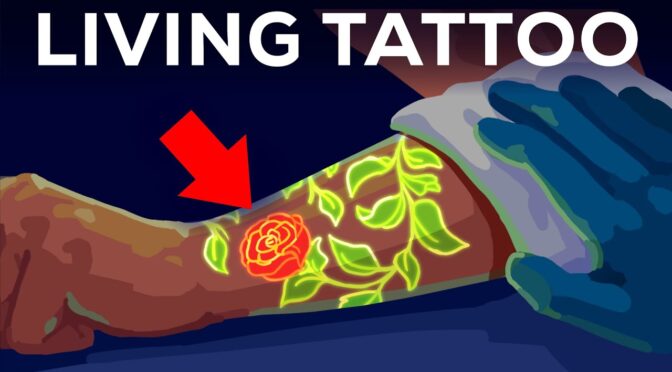This article is based on a video titled “Your Tattoo is INSIDE Your Immune System. Literally” by Kurzgesagt – In a Nutshell. The video reveals the complex biological processes that occur when ink is introduced into the skin.
Contents
- Skin’s Conveyor Belt of Death
- Tattooing and the Dermis
- Immune Cells and Ink Particles
- Tattoo Fading and Immune Response
- The video
Skin’s Conveyor Belt of Death
The skin, being the body’s largest organ, is in constant contact with the external environment. It combats potential threats through a unique mechanism where the outermost layer consists of dead skin cells. These cells, originating from the deeper layers, gradually move upwards, creating a protective barrier. This dead layer is continuously shed, taking with it any adhered microbes or dirt.
Tattooing and the Dermis
Tattooing targets the dermis, a layer beneath the outer dead skin cells. The dermis is rich in blood vessels, nerve endings, and immune cells. When tattoo needles penetrate this layer, they cause significant cellular damage and introduce ink particles. This triggers an immediate immune response, with macrophages and other immune cells rushing to the site to combat potential infections and contain the foreign ink particles.
Immune Cells and Ink Particles
Macrophages play a crucial role in tattoo longevity. These immune cells attempt to engulf and break down the ink particles. However, due to the ink’s chemical nature, it remains largely unaffected. Unable to eliminate the ink, the macrophages instead contain these particles within their bodies, effectively trapping them in the dermis. This containment is what makes tattoos permanent.
Tattoo Fading and Immune Response
Over time, tattoos fade and lose sharpness. This is partly due to the natural turnover of macrophages. As old macrophages die, new ones take their place, occasionally allowing small amounts of ink to escape. This process contributes to the gradual fading of the tattoo. Additionally, when tattoos are removed via laser treatment, the heat breaks down the ink into smaller particles, which are then either recaptured by new macrophages or carried away by bodily fluids.

